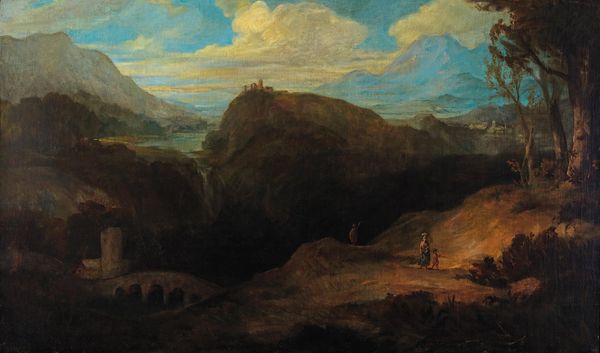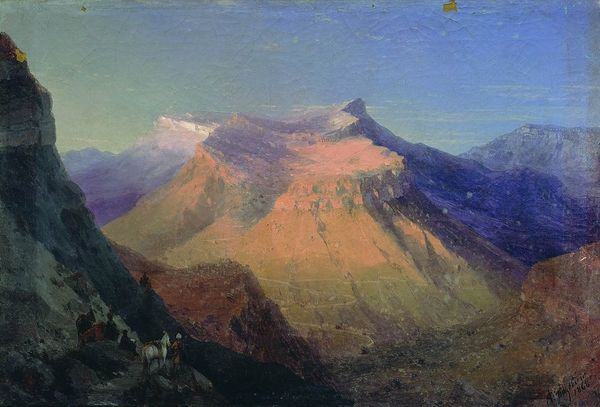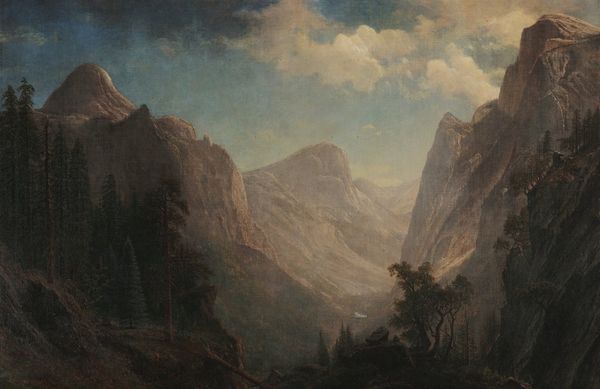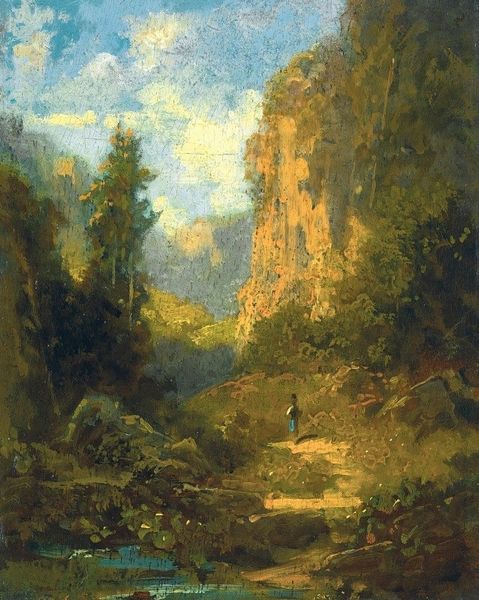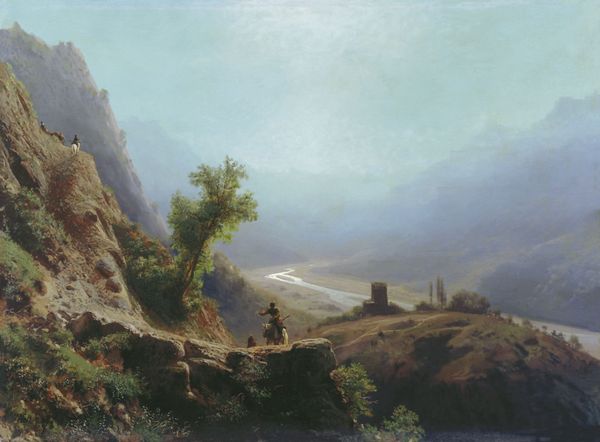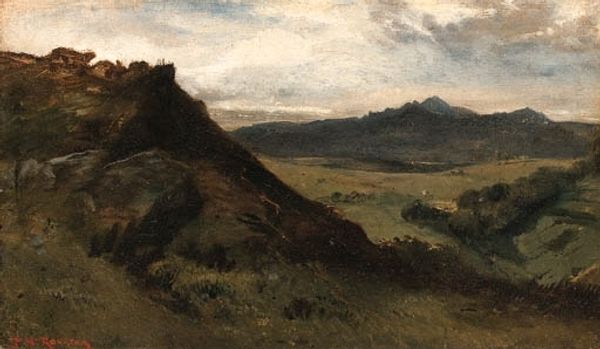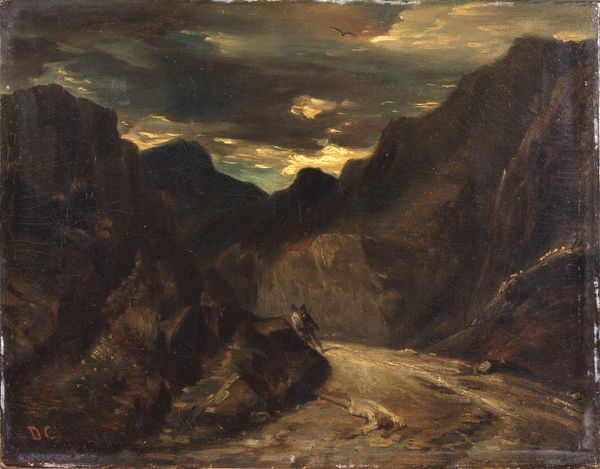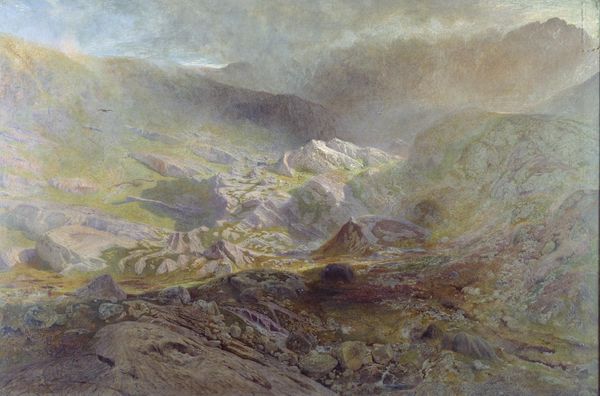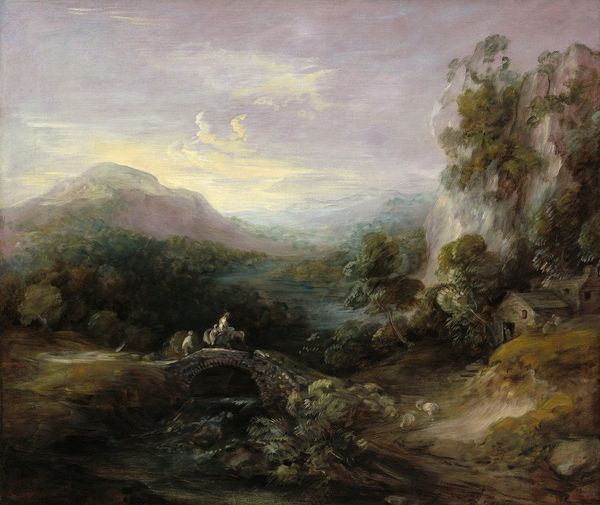
Copyright: Public Domain: Artvee
Curator: Here we have Carl Spitzweg's "Talschlucht mit Sennerin," dating back to 1875. He rendered this oil-on-canvas scene with meticulous detail. What's your immediate reaction? Editor: It strikes me as simultaneously grand and intimate. The towering mountains convey nature's power, yet the lone figure brings a quiet, human element. The scene feels charged with unspoken stories. Curator: Precisely. This embodies a romantic ideal: a dialogue between the individual and an often imposing natural world. What might that single figure signify to you? Editor: I see a shepherdess, traditionally a figure of both innocence and connection to the land. She reminds me of older pagan symbols in the way she carries a reverence for natural cycles, as she navigates her specific place in it. The steep valley seems to become a metaphor, perhaps, for life's journey. Curator: The valley path may indeed represent challenges, especially within the societal roles designated to women, whose bodies have long been symbolically linked to 'nature'. The Romantic era, while celebrating nature, also frequently romanticized specific, often constrained roles within it. Spitzweg captures that tension subtly. Editor: What resonates for me is how these motifs—the mountain, the valley, the shepherdess—become concentrated reservoirs of meaning, acquiring new relevance through time, and cultural change. They aren't simply representations, but encoded narratives. Curator: Exactly. Spitzweg uses accessible, realist painting techniques to subtly encode ideas about our place in nature, filtered through contemporary class and gender structures. This highlights the Romantic's tendency of framing identity through specific intersections with their natural world, revealing power dynamics both implicit and explicit in landscape. Editor: So, the image’s charm lies in how it triggers recognition. It sparks dialogue in our consciousness of historical narratives. It is how we reimagine those tropes today that breathes fresh air into the older symbol. Curator: Indeed. Spitzweg provides a tableau ripe for constant reinterpretation—offering viewers from diverse backgrounds access into a visually charged and ideologically rich landscape. Editor: A perfect starting point, then, for further reflection. Thank you.
Comments
No comments
Be the first to comment and join the conversation on the ultimate creative platform.

